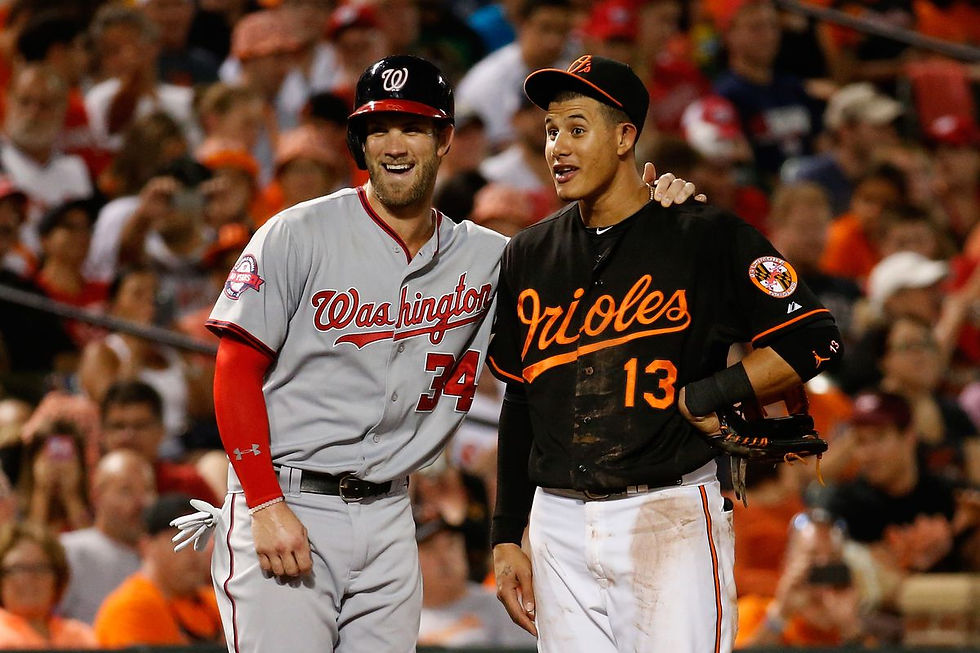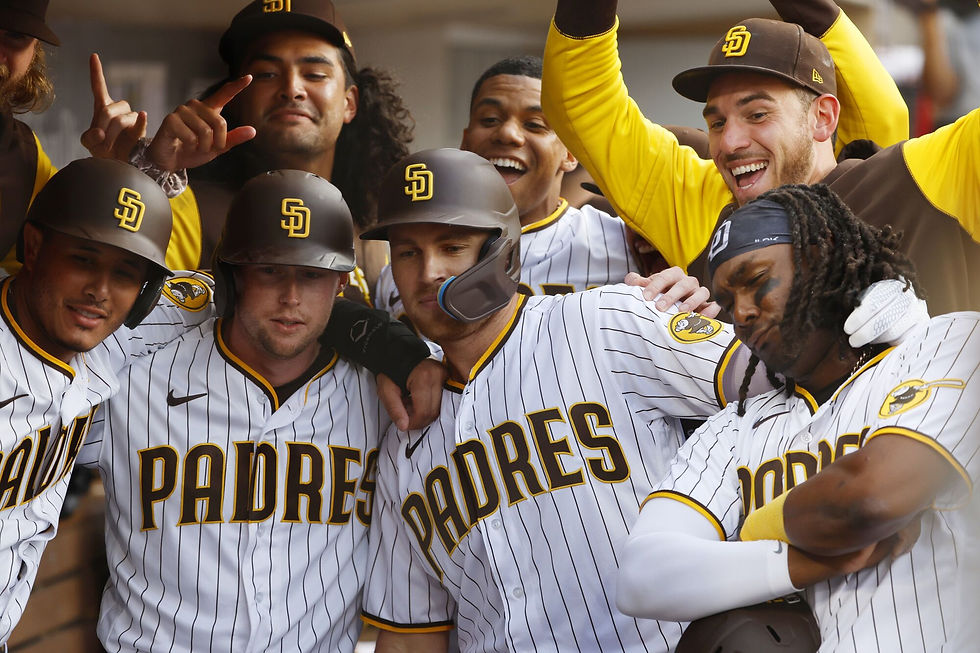It’s the offseason before the 2019 regular season, and all of baseball’s attention is on Bryce Harper and Manny Machado. Two outstanding players from the 2012 rookie class had played their last games on their rookie contracts, Harper as an MVP-caliber right fielder with the Nationals (coming off a slightly down year) and Machado as a loud-mouthed, slick-fielding third baseman traded at the 2018 Deadline from the Orioles to the Dodgers (coming off an above-average year). These two All-Stars made up a free agent duo that might rival Albert Pujols and Prince Fielder as the greatest contract-less couple of the 2010s, at least in terms of the hype surrounding their eventual signings. Predictions flew in from across North America about where each of them would land, with many analysts and reporters having the Yankees, Dodgers, Red Sox, Rangers, and other big market teams going after these famed athletes. But when Harper signed with the Phillies and Machado with the Padres, the overall sentiment from the MLB hot stove was, and I say this with great respect for all the parties involved, underwhelming.
Both the Phillies and Padres had no business being the big spenders that they were in 2019, yet they saw a future nucleus with their funds and farm systems that compelled them to go after the MLB free agent juggernauts. Harper’s contract was perhaps the stranger of the two, given its length (a whopping 13 years) and its destination (a team that hadn’t made the playoffs since 2011 in the same division as his previous employers in the Nationals), yet the Las Vegas native was adamant about his decision to sign in the City of Brotherly Love, and rightfully so. His time in Philly has been resurgent for his career, winning another MVP in 2021 with unbelievable on-base metrics that he has since replicated and almost perfected. The sweetest and most textbook lefty swing in baseball has captivated the Philadelphia faithful with booming prowess and inspirational triumph. Manny Machado, meanwhile, has also seen a resurgence with his own career in San Diego. A slow 2019 left room for improvement, but after a crescendo-ing three-year stretch from 2020-2022 that has seen him post a total OPS of 147, culminating in what is sure to be a top-five NL MVP finish in 2022, one can claim Machado’s legacy has been restored in southern California.

Still, though, despite the objective success of these two signings, the legitimacy of the Phillies and Padres seems to always be called into question at the slightest bit of uncertainty, so they’ve continued to bulk up. In the same offseason that they signed Bryce Harper, the Phillies traded for All-Star catcher JT Realmuto and had slugging infielder Rhys Hoskins wrapping up his sophomore season. The Fightins have since traded for contact specialist Jean Segura, seen the debut of hyped prospect Alec Bohm, and just this past offseason, secured outfielders/DHs Nick Castellanos and Kyle Schwarber to long-term, high-value contracts. The Padres famously sold their once-promising minor league system for All-Stars Juan Soto, Josh Bell, Brandon Drury, Jake Cronenworth, and Wil Myers, and have also added Trent Grisham, Ha-Seong Kim, and Fernando Tatis Jr. (he’s just in this post to make a point, just wait) to round out a potent lineup (not to mention catchers Austin Nola and Jorge Alfaro).

All of that roster-building and dollars spent has led these two franchises to where they are now: the 2022 National League Championship Series. Improbably, for the first time in the new playoff format, the fifth and sixth seeds will square off to see who has the right to represent the NL in the World Series. The discourse around baseball at the moment seems to be, “What gives?” Both of these teams underachieved the whole season, and have notoriously performed similarly in previous years, despite their hyped-up offenses. I agree with the consensus regarding that statement, in that these rosters, in particular their lineups, haven’t performed as advertised. It always seems like when some hitters excel, others struggle, or even worse, they slump.
But when it comes to the postseason, anything goes. Fifth or sixth seeds can transform into the seeds that they were meant to be all along, just as these two clubs have. Philly mowed through the Cardinals in the Wild Card round, then really flexed their muscles on the Braves in the NLDS. The Padres fought off the Mets in a hard-played series in Flushing, then followed that up by silencing the Dodgers in four games. So yes, these two teams have been the punchline to the concept of underachievement for the last couple of years, but if you think about it, all of that goes away when you look at where they are now. I think the reason for that is very simple: both of these teams are built on the reputation of their hitters. I’ve neglected to mention the pitching staffs of these two teams in this post because of how fickle they can be, but the hitting in particular is so boom-or-bust, just not in the sense that we’re used to (home runs or strikeouts).

In any isolated year, just describing a lineup with Juan Soto, Josh Bell, Manny Machado, and Trent Grisham would instill fear in those listening to said description, right? Soto is the king of the youngsters, Bell has been highly-touted since he debuted with Judge and Bellinger, Manny is Manny, and Trent Grisham is described as the next great Padre. And yet, Slam Diego won 89 games this year. Yes, I understand it’s one-dimensional to look solely at a team’s lineup to determine their success, but that’s not my point. The idea that a player can be summarized by their name alone is preposterous. Bryce Harper is not Bryce Harper because he’s Bryce Harper. There are deeper levels to all of these players on the Phillies and Padres that have coalesced into two championship contenders that are sure to bring us one heck of an NLCS. What I’ve been saying about this upcoming series to my friends is that if you were to simulate a season where everyone in baseball puts up their best career numbers, you can make a strong argument that these two teams would have much better records than they did this season (87 wins for Philly, 89 for SD). And right now, they’re playing like that simulation would. Or rather, they’re playing like how Philadelphians and San Diegans think they should’ve been playing the whole year.
Comments